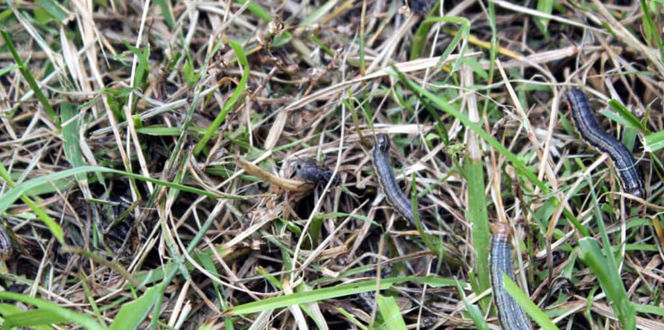Brown Patch Lawn Disease Description:
Brown patch is a fungal disease that develops during the hot, humid conditions of summer, transforming a green lawn into one with circular brown patches a few inches to several feet in diameter. Infected grass turns a dark purplish-green before fading to light brown, and has a sunken or flattened appearance. You may still see some healthy, unaffected grass within a diseased area.
Hosts:
Brown patch disease affects common lawn grasses including tall fescue, perennial ryegrass, Kentucky bluegrass, bentgrass, bermudagrass, zoysiagrass, and St. Augustinegrass.
Biology & Symptoms:
Brown patch develops quickly during prolonged periods of wetness, such as extended periods of rain, heavy dew, excessive irrigation or poor drainage, and when air temperatures range from 75 to 85 degrees. Over-fertilizing in late spring or summer, as well as excessive thatching, creates an ideal environment for fungal development. Cool-season brown patch or yellow patch is a similar disease caused by a related fungus, Rhizoctonia cerealis. This disease typically shows up in the form of yellow-green and brown rings surrounding healthy-looking turf. Since it can be difficult to determine which turf patch disease is the culprit, it is best to consult an expert for accurate diagnosis and proper treatment.
Management:
The best way to manage this disease is to maintain healthy turf. First, avoid over-fertilizing your lawn. Use a slow-release source of nitrogen - and only when the disease is dormant. Keep watering to a minimum; preferably only in the early-morning hours. Aerify lawn to reduce thatch, maintain proper soil pH, and mow at the proper height with sharp mower blades. In addition, selective pruning or removal of trees and shrubs can help increase light penetration and promote better air movement, further helping to prevent the disease. If the infection is severe, two to three fungicide treatments may help minimize recurrence and damage.





